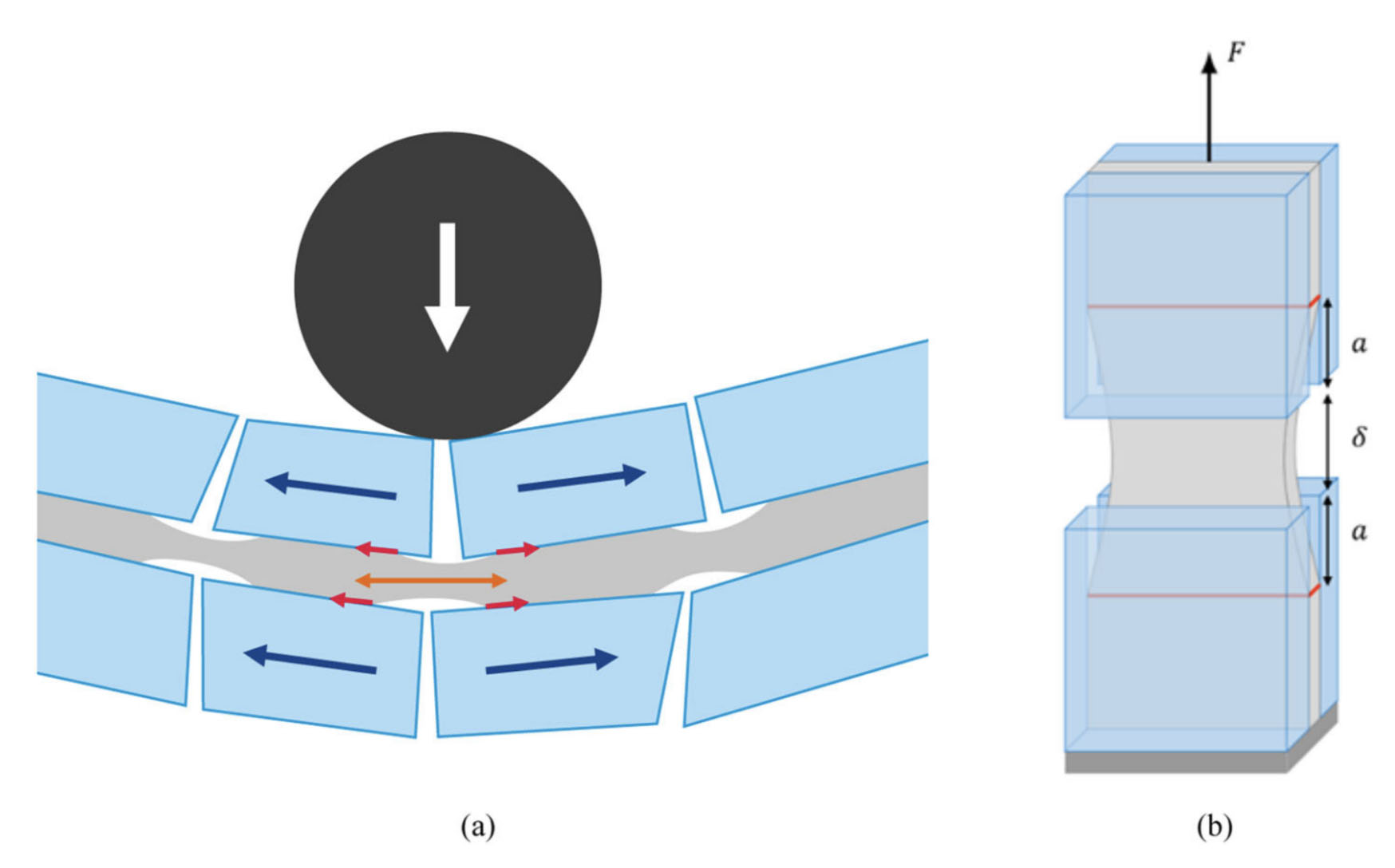GS&E journal > Adhesion Rupture in Laminated Glass: Influence of Interfacial Adhesion on the Energy Dissipation Mechanisms
Downloads

Abstract
In laminated glass under impact, most of the energy dissipation occurs in the coupled delamination and deformation of the polymer interlayer. The strong dependency of these mechanisms on interlayer nature, on loading rate and on temperature is known: however, the effect of the interfacial adhesion is unexplored. In this work, a surface modification technique is proposed, along with a mechanical characterization of the debonding with the Through Crack Tensile Test. We show that changing adhesion mostly affects dissipation close to the delamination front, while dissipation in the volume of the PVB interlayer seems unaffected, which we attribute to the competition between the changes in both strain and strain rate in the viscoelastic interlayer. Finally, we discuss the experimental observation of the limits of the steady-state debonding regime, related to the competition between adhesive crack propagation and cohesive failure in the interlayer.
Published
Issue
Section
Laminated Glass & Interlayer Properties
Keywords:
Laminated glass, PVB, adhesion, Through Crack Tensile TestLicense
Copyright (c) 2020 Paul Fourton, Keyvan Piroird, Matteo Ciccotti, Etienne Barthel

This work is licensed under a Creative Commons Attribution 4.0 International License.



